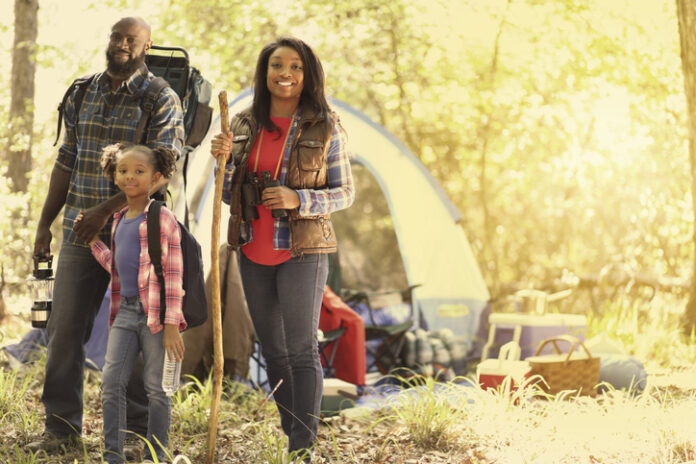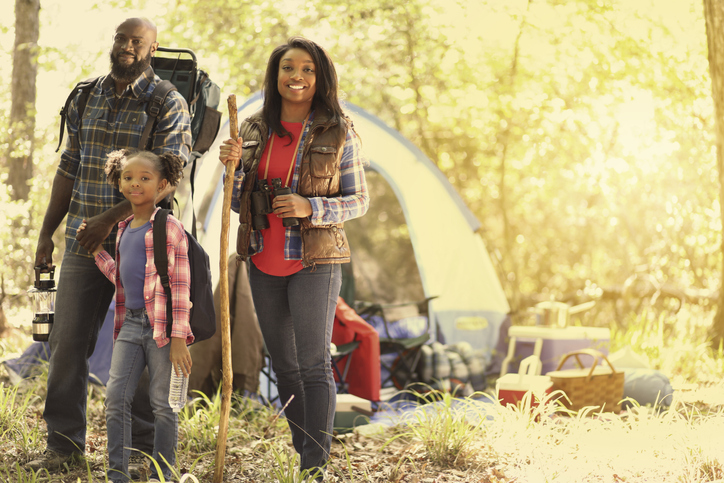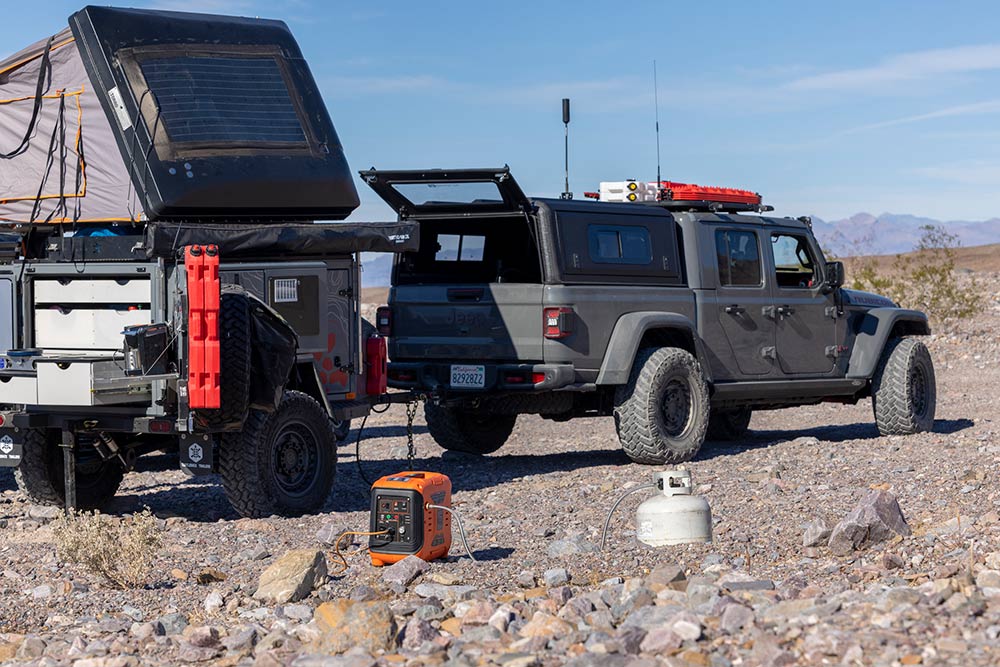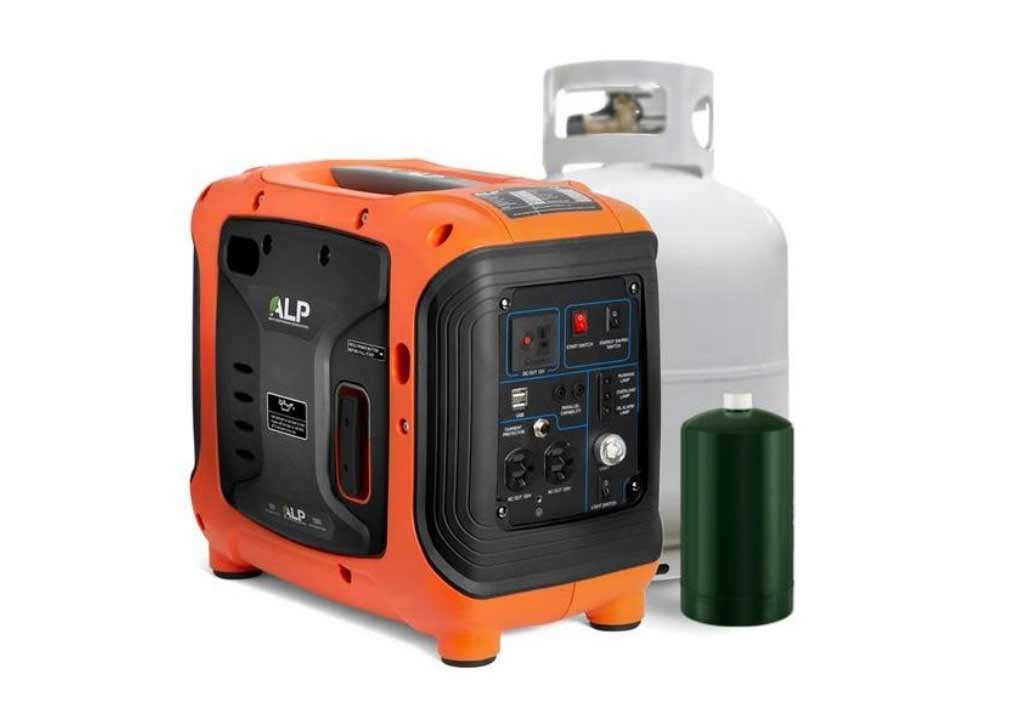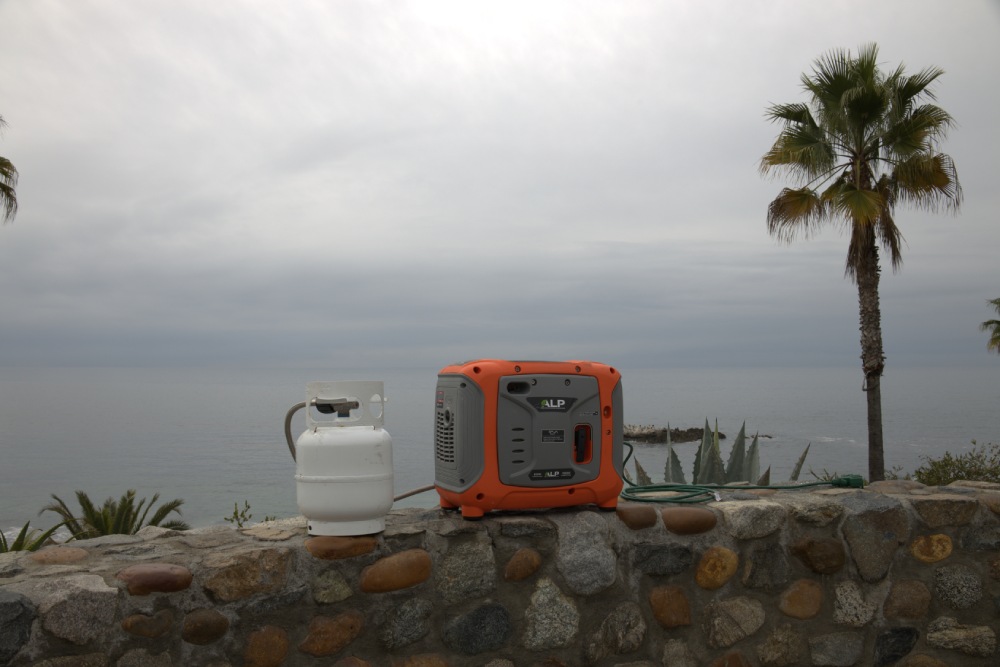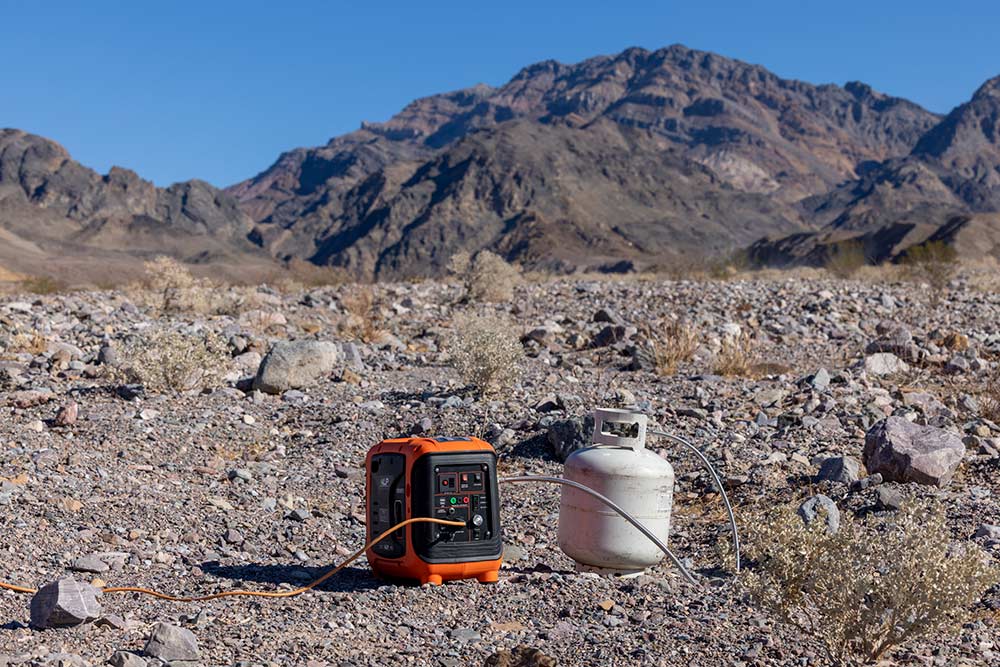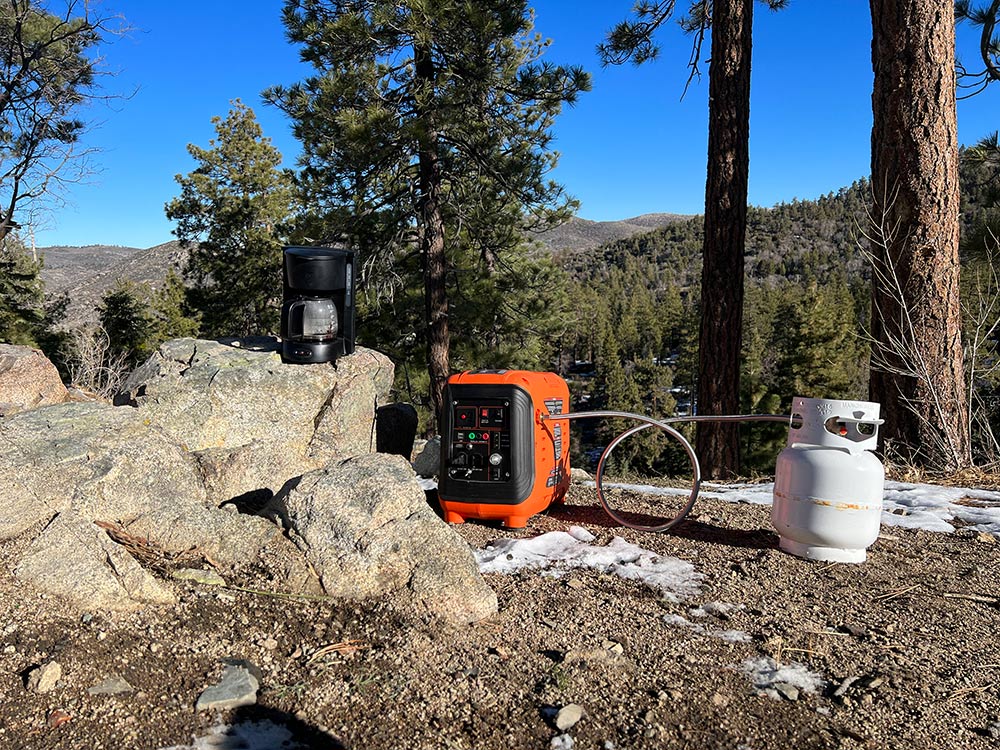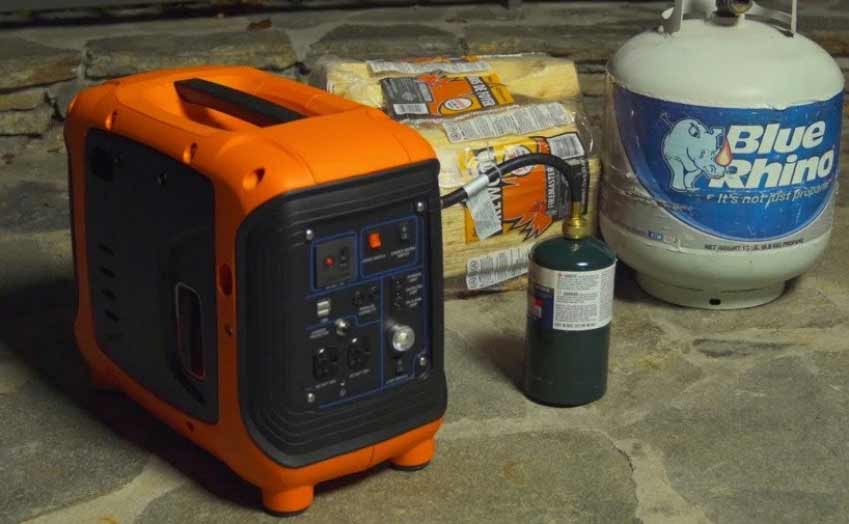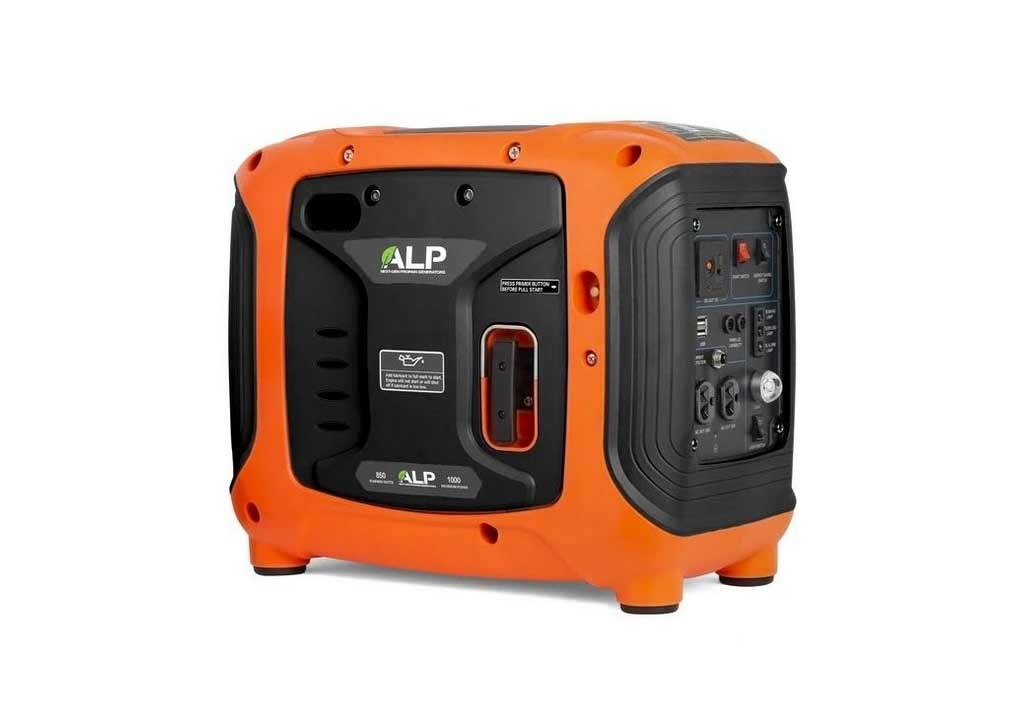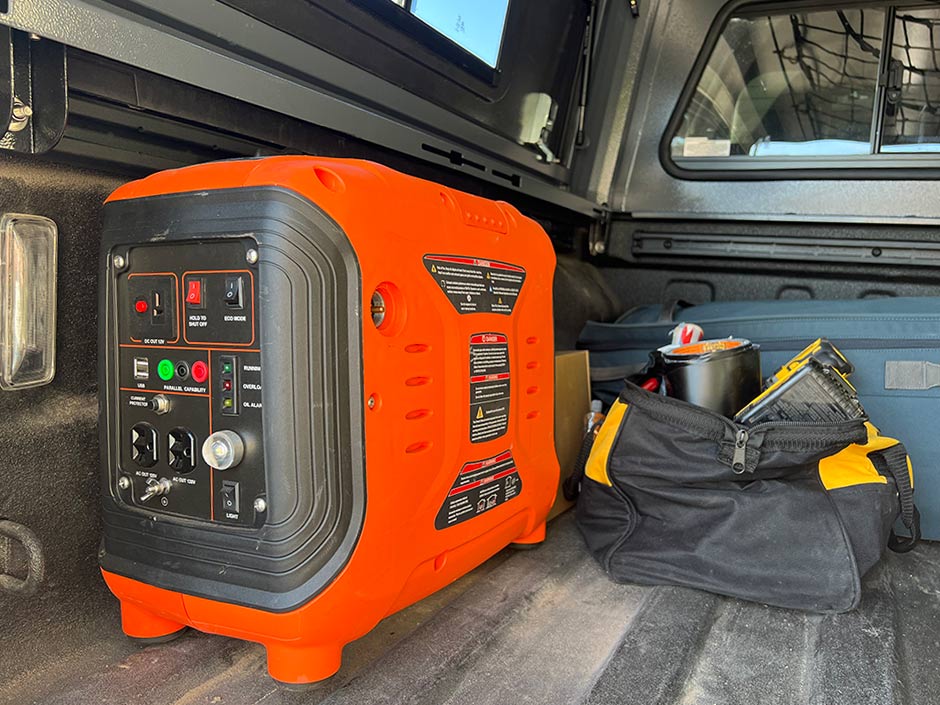Photo by fstop123 via iStock
When camping, we need to be concerned about our personal safety and the safety of those around us. We also need to protect the natural setting in which we camp.
Generators aren’t dangerous; however, if misused, they can lead to injury. Therefore, this article includes a checklist that ensures you stay safe out in the wild while using your generator.
Get a hands-on explanation of some generator safety tips in the video above by DIYHIPChicks
Table of Contents
- Choose a Good Quality Generator
- Keep the Generator Away From You
- Keep the Generator Dry
- Store Fuel Outside your Vehicle
- Let Your Generator Cool for a Few Minutes Before Refuelling
- Recommended Camping Gear
Generator Safety Checklist – Choose a Good Quality Generator
The first and most important point on our generator safety checklist is choosing a good quality generator. Bad quality units can lead to fires, electrical issues, or just frustration as many times they might not work as one expects them to work.
Our generator of choice is the ALP 1000-watt propane generator. We love this product because it runs on propane, which eliminates spills and bad smells inside your vehicle during transport. The last thing you want is to breathe gas fumes or spill gas on the ground while enjoying a beautiful campsite.
Another benefit of this generator is that it comes with a laundry list of features and amenities. For example, it’s EPA & CARB approved, offers up to 60 hours of runtime on a 20-pound tank, and has an ultra-bright emergency LED light built into it.
You also get the advantage of multiple charging ports, pure sine-wave technology, and a limited one-year warranty. Other amenities include:
- A 12-inch hose
- The ability to run two units in parallel
- A low oil auto shutoff to protect the motor
- A built-in handle for easy transport
All this is in a unit that weighs about 30 pounds and is just 18-1/4”L x 10-1/4”W x 14”H.
For camping and overlanding, we believe this is one of the best units out there and our experience with this product has been nothing but a joy. You get plenty of power in a small, easily portable package that runs quietly and efficiently as well. What more could you want?!
Camping is about relaxing and enjoying the beauty around you. With the ALP 1000-watt propane generator, you can do just that.
Generator Safety Checklist – Keep the Generator Away From You
There are three reasons why one would want to keep their generator a good distance away from their sleeping and hang-out area. First is the smell. While in nature, we want to breathe fresh air and the smell of fumes from the generator can be annoying.
The second reason is noise. Generators work on internal combustion; therefore, they make noise regardless of how good they are.
Finally, there is the issue of carbon monoxide poisoning. Carbon monoxide poisoning occurs when a closed space becomes filled with carbon monoxide which is produced from internal combustion. These gases are poisonous!
To avoid this, keep the generator well away from your sleeping space and point the exhaust in the opposite direction.
Generator Safety Checklist – Keep the Generator Dry
Your generator must always be kept dry; therefore, make sure that when it rains you have a way of covering it. You can do this simply by using a tarp (make sure that you won’t burn the tarp with the exhaust and that the generator has airflow so it doesn’t overheat) or anything else that is small and easy to carry but can provide some shelter from the elements.
This is also true in extremely warm conditions with no access to shade. Such a situation may occur while camping at the beach. If you leave your generator directly under the scorching sun all day long there is a good chance of it overheating.
Generator Safety Checklist – Store Fuel Outside your Vehicle
Propane is far less likely to provide any issues while stored in your vehicle than gasoline; however, it is a flammable substance stored in a can which can lead to issues.
We suggest storing your fuel whether that is propane or gasoline on a roof rack or in the bed if you have a truck. This ensures that even if something does go wrong (like propane bottle leakage or gasoline spillage) you will still be safe.
Generator Safety Checklist – Let Your Generator Cool for a Few Minutes Before Refuelling.
Our last point on the generator safety checklist is to leave the generator to cool down for a few minutes before refueling (if it is gasoline-powered). This has two purposes.
First, by letting the generator cool down, you won’t burn your fingers while trying to refuel. And second, this avoids fuel spillage on hot engine parts, which can lead to a fire.
It’s also good for your generator as you give it a bit of a break to cool down before it gets going again.
Generator Safety Checklist – Final Thoughts
By following the above generator safety checklist, you will greatly reduce the possibility of injury or accidents while using your generator in the wild. Instead, you’ll have a recipe for a fun and relaxing trip with the power you need to charge your devices and run your electronics.
And with a reliable, budget-friendly option like the ALP 1000-watt propane generator, you’ll have the power you need now and for many years to come!
If you have any further generator safety questions or tips, you can post them in the forum section of our page.
Recommended Camping Gear



